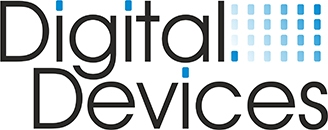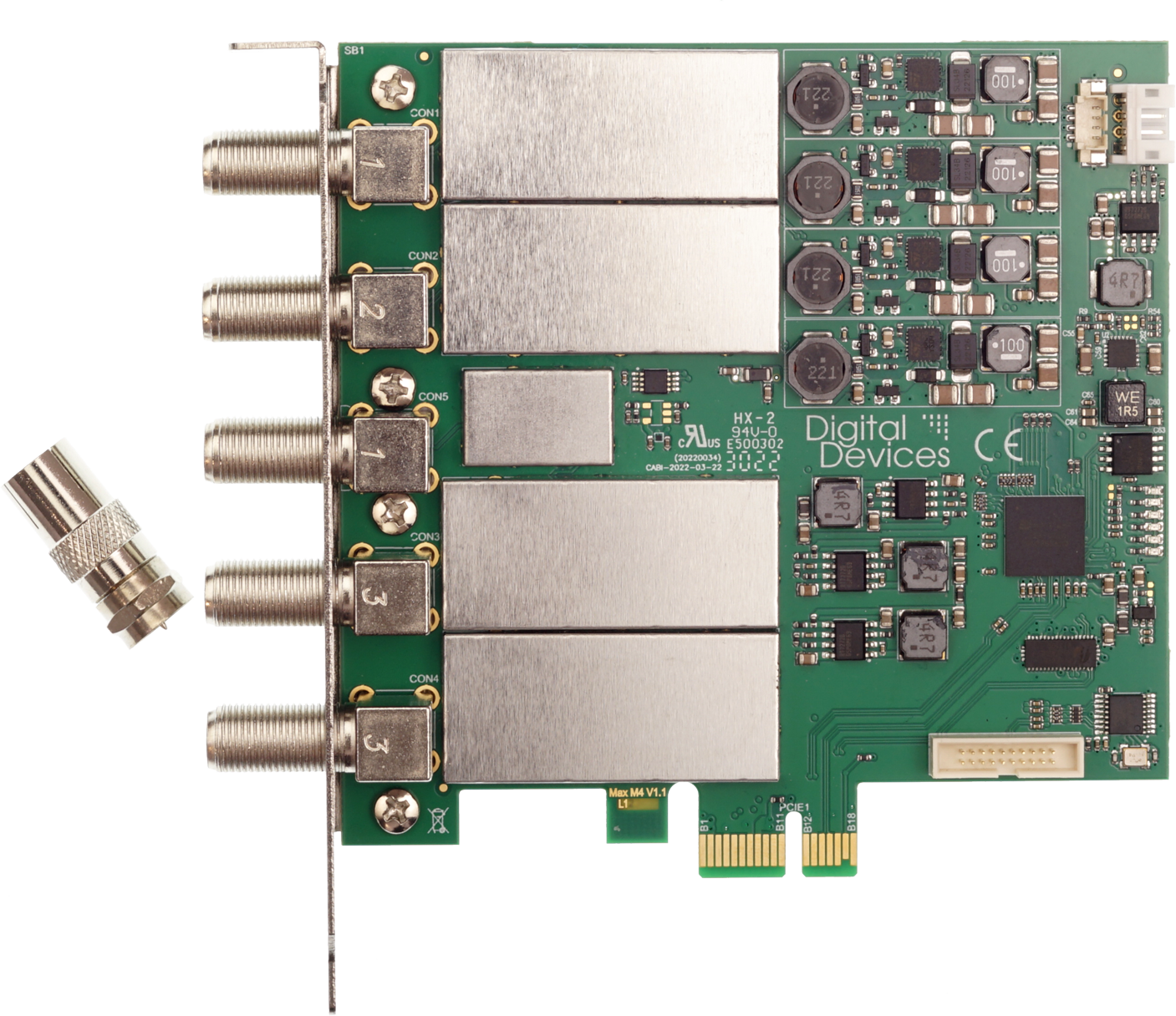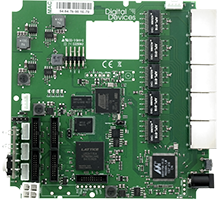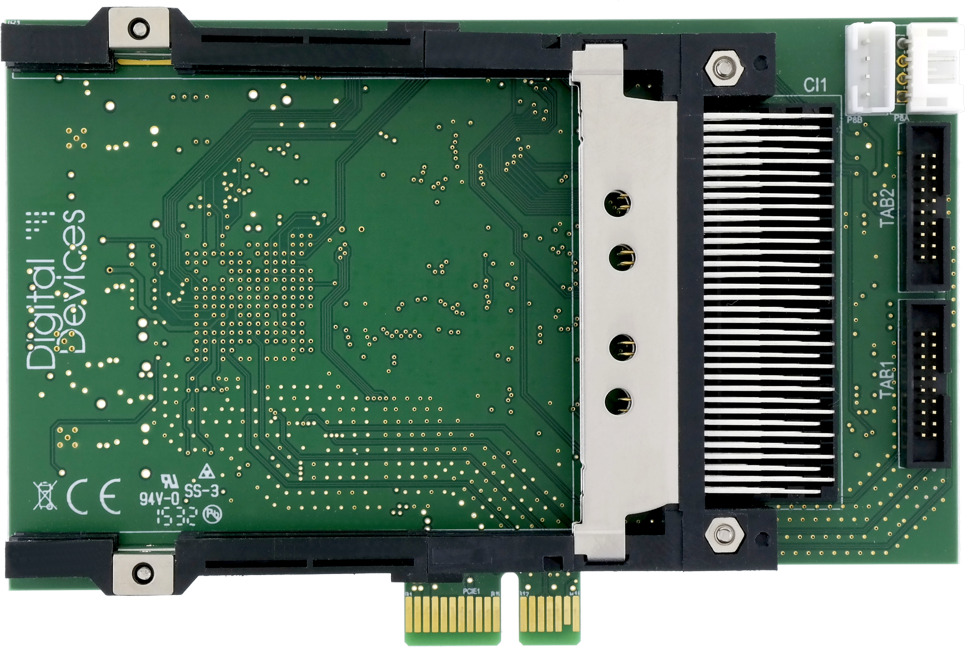4-fach Multi-Band Tuner
- DVB-S (Satelliten Tuner)
- DVB-S2 (Satelliten Tuner)
- ISDB-S (Satelliten Tuner)
- DVB-C (Kabel Tuner)
- DVB-C2 (Kabel Tuner)
- ISDB-C (Kabel Tuner)
- J.83 Annex B (Kabel Tuner)
- DVB-T (Terrestrischer Tuner)
- DVB-T2 (Terrestrischer Tuner)
- ISDB-T (Terrestrischer Tuner)
- Hinweis: Es ist ein beliebiger Mischbetrieb zwischen Satellit, Kabel und Terrestrisch möglich.
- Für Kabel und Terrestrisch steht nur ein Eingang zur Verfügung.
DVB-S2 Merkmale
- QPSK/8PSK bis 46 MSym mit bis zu 120 MBit/s (für neue UltraHD-Transponder)
- Empfindlichkeit < 30 dBµV
DVB-T2 Merkmale
- DVB-T2 Spezifikation Versionen: 1.1.1, 1.2.1 und 1.3.1
- DVB-T2 Base Profile
- DVB-T2 Lite(!) Profile
ISDB-C Merkmale
- mit TSMF Support
Einkabellösung
- Ein Antennenkabel versorgt alle Kabel-/terrestrischen Tuner.
Unicable® SCR/Cenelec EN50494
- Unterstützt eine Verbindung von bis zu 8 Tunern über ein Antennenkabel
- Voraussetzung: Unicable®/SCR/CENELEC EN50494 konformes LNB oder Multischalter nach En50494
JESS©/Cenelec EN50607
- EN50607 bis zu 32 Tuner über ein Antennenkabel!
- Voraussetzung: CENELEC EN50607 konformes LNB oder Multischalter nach EN50607
DiSEeqC 2.0 Support
PCIexpress
- Anschluss via PCIe x1 bis x16 slot
GT-Link Port
- zum Anschluss an eine Octopus NET (Datenrate > 1GBit)
- Hinweis: Betrieb an PCI Express oder GT-Link Port
HDTV Empfang – 1080p
Unterstützung vieler TV-Applikationen
- z. B. Microsoft Windows® Media Center 7/8
- DVBViewer, Media Portal, Gen2VDR, MythTV
Umweltfreundliche Green IT
- Leistungsaufnahme nur ca. 7 Watt
- Ohne Tantalkondensatoren
- Ohne Elektrolytkondensatoren
Unterstützte Betriebssysteme
- Microsoft Windows® 7/8(.1)/10
- Linux (ab Kernel 2.6.34)
Satelliten Merkmale
- Bis zu 46 MSymbole DVB-S2, QPSK, 8PSK
- LNB Power: 4x max. 19 V, 1 A Pulsstrom, 500 mA Dauerstrom Überstromschutz Kurzschlussschutz
- L-Band: 950 MHz – 2150 MHz
- DVB FEC: (Auto Spectral Detection)
- Modulation: QPSK/8PSK
- Volle DiSeqC 2.X Unterstützung
DVB-C Merkmale
- Frequenzbereich: 51 – 858 MHz
- Alle Modulatios- und Codearten nach DVB-C Spezifikation
- Symbolraten von 0,87 – 6,9 MBaud
- Empfindlichkeit: 47 dbµV (64 QAM), 47 dbµV (256 QAM)
DVB-C2 Merkmale
- Demodulation
- 16, 64, 256, 1024, 4096 QAM
- 2/3, 3/4, 4/5, 5/6, 8/9, 9/10 Code Rates
- 1/64 and 1/128 Guard Intervals
- 8 MHz and 6 MHz channel bandwidths
- Data Slices Types 1 & 2 supported
- Data Slice width up to 7.61 MHz
- Stream processor for automatic common-PLP and data-PLP combination
- Notch Support
- Narrowband and broadband notches
- Reception of narrow channels down to 2 MHz between broadband notches
- Time interleaving modes 4, 8 symbols and ‚best fit‘
DVB-T/T2 Merkmale
- Frequenzbereich: 49 – 861MHz, 2k&8k OFDM
- Alle Modulationsarten nach DVB-T und DVB-T2 Spezifikation
- Empfindlichkeit: -83,0 dBm bei 16-QAM&3/4
ISDB-T Merkmale
- Conforms to ARIB STD-B31
- 6 MHz,7 MHz and 8 MHz BW support
- Excellent phase noise resistance
- Excellent multipath equalization performance
- Automatic detection of mode/guard interval lengths
- EWS (Emergency Warning System) flag output
Standard Anschlüsse
- PCI Express
- L-band Eingangsstecker (unterstützt eventuell benötigte Stromversorgung zum LNB)
- IEC Buchse (Input)
- 1x 20 pol. Datenanschluss für differentielle Anbindung des Datenkabels (LVDS) an die Octopus NET
- abwärtskompatibel zum klassischen Übertragungsverfahren mit 80 MBit
Unicablekonform:
- SCR/Cenelec EN 50494 (Unicable®)
Umweltstandards
- RoHS Konformität
- WEEE DE 99353762
Leistungsaufnahme typisch
- DVB-T2: 8,6 Watt (worst case -80 dBm QAM256 7/8)
- DVB-C: 7 Watt
- Hinweis: aktive Kühlung erforderlich, passive Kühlung reicht nicht aus,
ausreichend ist ein leichter Luftstrom im PC
Unterstützte Betriebssysteme
- Linux (ab Kernel 2.6.34)
- Microsoft Windows® 7 (32/64 Bit) (inkl. Windows® Media Center)
- Microsoft Windows® 8 (32/64 Bit) (inkl. Windows® Media Center)
- Microsoft Windows® 10 (32/64 Bit)
Systemvoraussetzungen
- Dual Core Intel® oder AMD® CPU
- 512 MB RAM
- ein freier PCIe Steckplatz (x1 bis x16)
Abmessungen
- L 104 mm, B 111 mm, T 15 mm
Octopus NET Rack
Über den GT-Link Port der Octopus NET Rack können die Max A8, die Max S8, die Max SX8 oder die Max M4 angeschlossen werden.
mehr Info...
| DVB-S2/S2X Features |
Max SX8 |
Max SX8 Basic |
Max S8 |
Max M4 |
Cine S2 V7 A |
| Short Frames | |||||
| Long Frames | |||||
| ACM/VCM | |||||
| MIS | |||||
| Annex M | |||||
| Channel Bonding (S2X) | |||||
| QPSK 1/4,1/3,2/5 | |||||
| QPSK 1/2, 3/5, 2/3, 3/4, 4/5, 8/9, 8/10 | |||||
| QPSK 13/45, 9/20, 11/20 | |||||
| QPSK 11/45, 4/15, 14/45, 7/15, 8/15, 32/45 | |||||
| 8PSK 3/5, 2/3, 3/4, 5/6, 8/9, 9/10 | |||||
| 8PSK 23/36, 25/36, 13/18 | |||||
| 8PSK 7/15, 8/15, 26/45, 32/45 | |||||
| 8APSK-L 5/9, 26/45 | |||||
| 16APSK 2/3, 3/4, 5/6, 8/9, 9/10 | 3 | ||||
| 16APSK 26/45, 3/5, 28/45, 23/36, 13/18, 7/9, 77/90 | |||||
| 16APSK 7/15, 8/15, 26/45, 3/5, 32/45 | |||||
| 16APSK-L 5/9, 8/15, 1/2, 3/5, 2/3 | |||||
| 32APSK 3/4, 4/5, 5/6, 8/9, 9/10 | 3 | ||||
| 32APSK 32/45, 11/15, 7/9 | |||||
| 32APSK 2/3, 32/45 | |||||
| 32APSK-L 2/3 | |||||
| 64APSK 11/15, 7/9, 4/5, 5/6 | |||||
| 64APSK-L 32/45 | |||||
| 128APSK 3/4, 7/9 | |||||
| 256APSK 32/45, 3/4 | |||||
| 256APSK-L 29/45, 2/3, 31/45, 11/15 | |||||
| VL-SNR | |||||
| Maximum Symbolrates (MSymbols/s) |
Max SX8 |
Max SX8 Basic |
Max S8 |
Max M4 |
Cine S2 V7 A |
| QPSK | ~954 | 64.54 | 45 | 46 | 67.5 |
| 8PSK/8APSK | 864 | 64.54 | 45 | 46 | 67.5/455 |
| 16APSK | 64.54 | 34.53 | 67.5/33.755 | ||
| 32APSK | 51.64 | 27.53 | 54/275 | ||
| 64APSK | 434 | ||||
| 128APSK | 36.854 | ||||
| 256APSK | 32.254 | ||||
| Annex M | 500 | ||||
| Card Features | |||||
| Demodulators/Channels | 8 | 8 | 8 | 4 | 2 |
| Inputs | 4 | 4 | 4 | 4 | 2 |
| BBFrame Output |
4 Maximale DVB-S2/S2X LDPC-Bitrate ist auf 720 Mbit/s begrenzt. Diese Bitrate ist definiert als Symbolrate * Bits/Symbol, d. h. 8PSK 30 M Symbole = 90 Mbit/s. Die verwendete Bitrate wird vom Treiber dynamisch zugewiesen. DVB-S-Kanäle tragen nicht zum Limit bei.
5 Single/Dual Demod Nutzung




